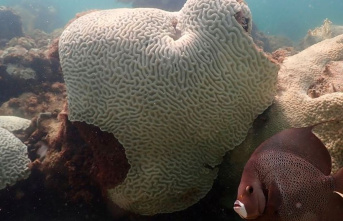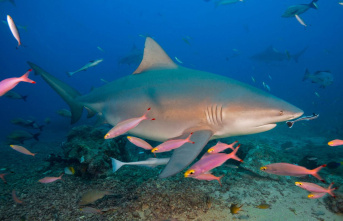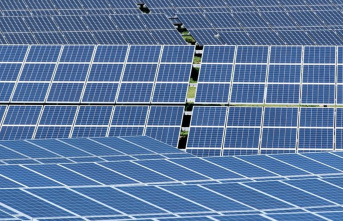Droughts, heavy rain, heat, shorter winters, floods: the list of climate catastrophe scenarios is well known. Not least because Europe is also increasingly being hit by such extreme weather events. Climate researchers and politicians around the world are trying to avert the worst.
According to the Paris climate agreement agreed in 2015, the 1.5 degree target is intended to solve the climate problem. Countries around the world have agreed that the global temperature should rise by a maximum of 1.5 degrees by 2050 - compared to the average temperature before industrialization. But exactly this goal is unrealistic according to Hamburg scientists. Why this is so and what it means for the world:
The EU proposed a 2 degree target in 1996, which was taken up at the end of the UN climate conference in Copenhagen in 2009. However, the goal was non-binding. In 2015, countries around the world agreed to allow the global temperature to rise by a maximum of 1.5 degrees by 2100 compared to the average temperature from the years 1850 to 1900. The goal was laid down in the Paris climate agreement. The figure was calculated by the Intergovernmental Panel on Climate Change (IPCC).
So far, the global average temperature has risen by 1.1 degrees. This means that the temperature may only rise by 0.4 degrees. In the current IPCC report, the climate scientists are still optimistic that this goal can be met by 2100. However, researchers have expressed doubts about this in recent years.
According to the climate update of the UN World Weather Organization (WMO), there is a 50 percent probability that the 1.5 degree mark will already be exceeded in 2026. This does not mean that the temperature limit is permanently broken, but it can happen more often. Since 2015, the WMO has published these forecasts every year. At that time it was already considered likely that the 1.5 degree mark would be exceeded in 2025. The probability increased with each additional report.
The Hamburg researchers agree with the WMO forecasts. The behavior of consumers and companies is slowing down the climate protection that is urgently needed worldwide. The reduction of carbon dioxide emissions "is simply happening too slowly," explained the head of the Cluster of Excellence "Climate, Climate Change and Society" (Cliccs), Anita Engels. The researchers therefore consider it unrealistic that the 1.5 degree target will be met.
According to the researchers, social change would be necessary to curb global warming. "If we miss the climate targets, it becomes all the more important to adapt to the consequences," stressed Engels. Nevertheless, efforts to protect the climate must continue. The Director of the Max Planck Institute for Meteorology, Jochen Marotzke, warned that every half a degree of global warming is noticeable.
According to the researcher, the development of global temperature depends not only on emissions, but also on the reaction of the climate. The climate is an inert system. Changes usually become noticeable years or even decades later. Extreme weather events make this clear: Although CO2 emissions have been increasing since industrialization, extreme weather events caused by climate change in Europe, for example, have only been noticeable for a few years.
Overall, the lower the temperature rise, the lower the risks for ecosystems and people. It is already clear that extreme weather events such as drought, heat, heavy rain, floods and shorter winters will become more frequent in the future. Even if CO2 emissions were stopped immediately, it would take years for the global climate to return to normal. How severe the negative consequences are also depends on how the temperature develops in the future:
1,5 Grad:
2 Grad:
3 to 4 degrees:
more than 4 degrees:
Climate researchers and scientists of the IPCC report advocate so-called climate adaptation measures. On the one hand, this means that countries must prepare for further extreme weather events and take measures to prevent greater damage. Such catalogs of measures exist both at EU and national level. It contains proposals such as expanding coastal protection, greening cities more, and paving less soil. But depending on how the climate develops in the coming years, "climate resilience" will also reach its limits, say climate researchers. For example, some regions could become uninhabitable if the global temperature rises by about 2 degrees.
Sources: Max Planck Society, WWF, Federal Environment Agency, CLICCS, UN World Weather Organization, "Süddeutsche Zeitung", "Welt", with material from DPA.











